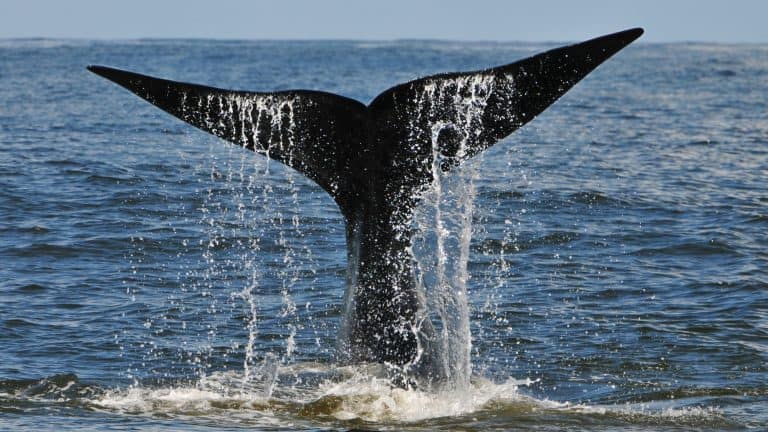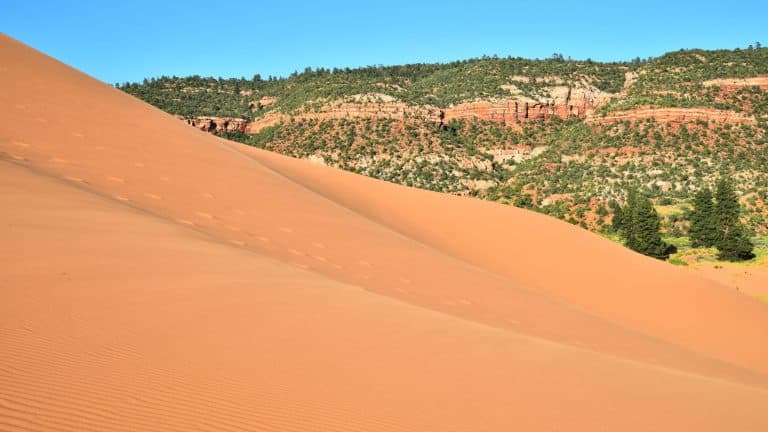Discover Parks & Wildlife contains affiliate links and is a member of the Amazon Services LLC Associates Program. If you make a purchase using one of the Amazon links (or other affiliate links), we may receive compensation at no extra cost to you. See our disclosure policy for more information.
These 14 Stunning Natural Phenomena Turn Ordinary Landscapes Into Living Works Of Art
The world is absolutely brimming with wild and vibrant displays of color that are so breathtaking, they’ll make your regular “blue sky and green grass” combo look like a grayscale film. And these natural phenomena are the kind of things that make you pause and question if nature is secretly moonlighting as an artist with a flair for the dramatic.
From surreal skies to landscapes that look like they’ve been plucked out of a painter’s imagination, these colorful wonders will have you blinking twice just to make sure your eyes aren’t playing tricks on you.
And trust me, these sights are less “nice scenery” and more “how is this even real?” Prepare to be utterly impressed.
Grand Prismatic Spring, Wyoming

Wyoming’s Grand Prismatic Spring isn’t just a hot spring; it’s a lava lamp of colors in real life. This rainbow-hued wonder is the largest hot spring in the U.S., proudly flaunting vivid rings of blue, green, yellow, orange, and red. Why so colorful, you ask? Microbial mats that chill out in different temperature zones are the artists here, painting the water with their vivid hues.
But don’t get too close, this natural marvel is essentially a boiling cauldron that can reach up to 160°F. But the steam rising from its vivid waters is just the cherry on top of this trippy spectacle (making you wonder whether science or magic is making it all happen).
Waitomo Glowworm Caves, New Zealand

Who needs a telescope when you’ve got glowworms lighting up the ceiling of these caves in New Zealand? Step inside, and it’s like the stars got tired of the night sky and decided to hang out underground. These teeny-tiny fluorescent bugs, formally known as Arachnocampa luminosa (ooh, fancy), emit a blue-green glow that turns the cave into a galaxy-like spectacle.
The kicker? Their shimmer is actually a result of their digestive systems working overtime. Yes, that romantic glow? It’s bug poop lighting the way. Nonetheless, the eerie calm of the caves combined with their otherworldly glow makes for a surreal experience that’s equal parts breathtaking and humbling. Just maybe don’t think too much about the weird biology glowing all around you.
Spotted Lake, Canada

Canada’s Spotted Lake is proving that lakes don’t need to be boring stretches of water. Instead, this one’s covered in splotchy, polka-dotted patterns that look like someone doodled all over its surface. The “spots” form when the lake starts drying out in the summer, leaving behind mineral deposits for the ultimate kaleidoscope effect.
Calcium, sodium, and magnesium are the stars of this artistic show, changing the spots’ colors with the water levels. Local First Nations communities even consider the lake sacred, and you’ll quickly see why when you catch a glimpse of this natural curiosity. It’s tranquil, unique, and, frankly, a little absurd… just the way an unforgettable landmark should be.
Bioluminescent Bays, Puerto Rico
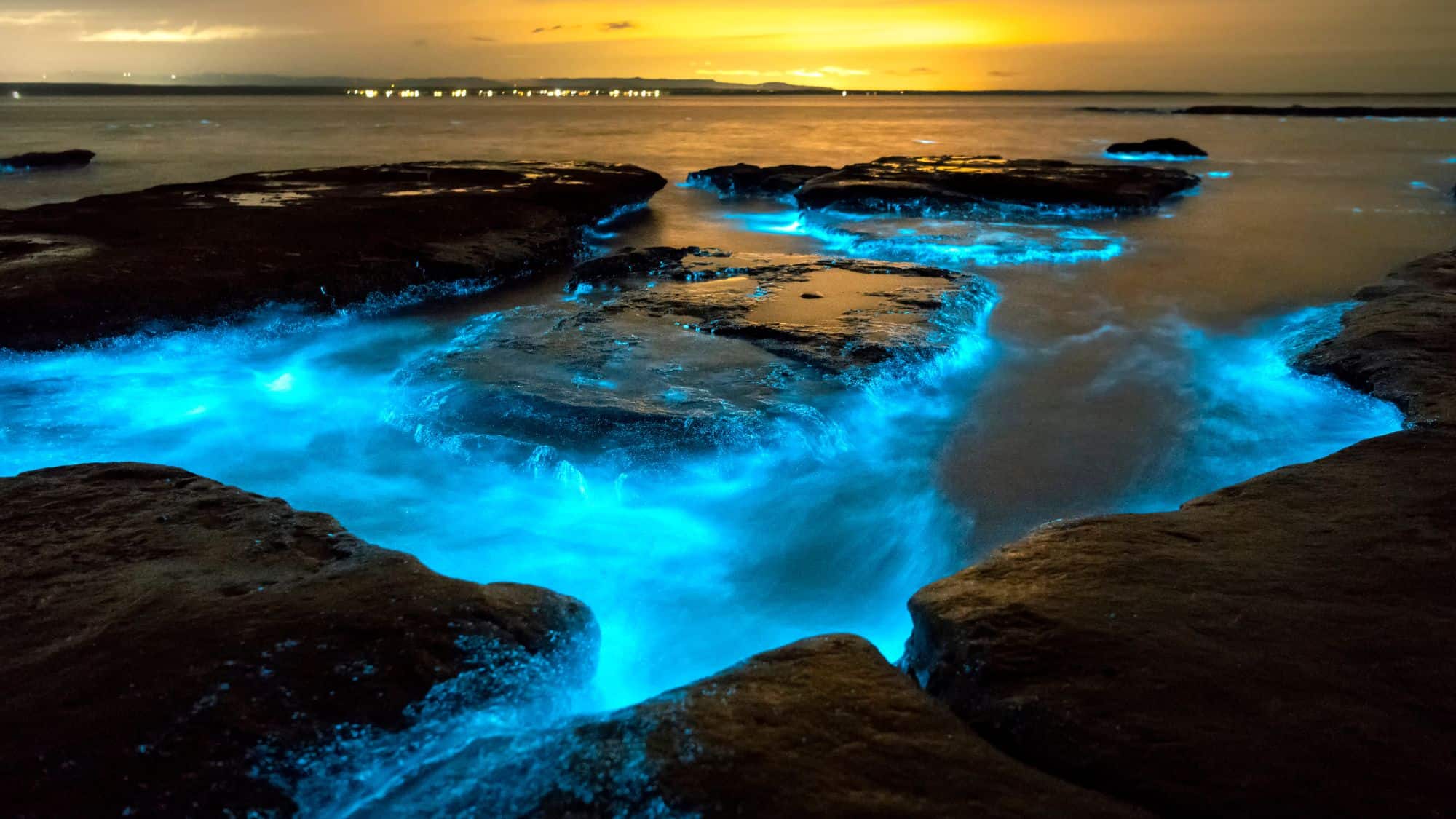
Puerto Rico’s famous bioluminescent bays are proof that nature knows how to throw an electric light show. These glowing waters come alive at night thanks to microscopic dynamos called dinoflagellates. Agitate the water (whether with your hand or a paddle) and the tiny organisms light up the water in shimmering swirls of blue and green.
It feels like swimming through liquid fireflies, except you’re not being eaten alive. The best spots to see the glow include Mosquito Bay in Vieques and Laguna Grande in Fajardo. But remember, try not to disturb the ecosystem too much; these dinoflagellates may be tiny, but they like their peace while dazzling you.
Aurora Borealis (Northern Lights)

The Aurora Borealis, also known as the Northern Lights, is nothing short of the Earth pulling out all the stops to impress you. These shimmering ribbons of color, ranging from greens to pinks to majestic purples, light up the Arctic skies when charged solar particles decide to party in style with our atmosphere.
It’s science, sure, but it also feels like the cosmos working overtime to blow your mind. Best viewed from places like Norway, Iceland, or northern Canada, these lights are notoriously elusive and require clear skies, a little patience, and plenty of warm layers. Oh, and the catch? They’re caused by solar storms… but the only storm you’ll really feel is your heart skipping a beat when you finally spot them.
Lencois Maranhenses National Park, Brazil
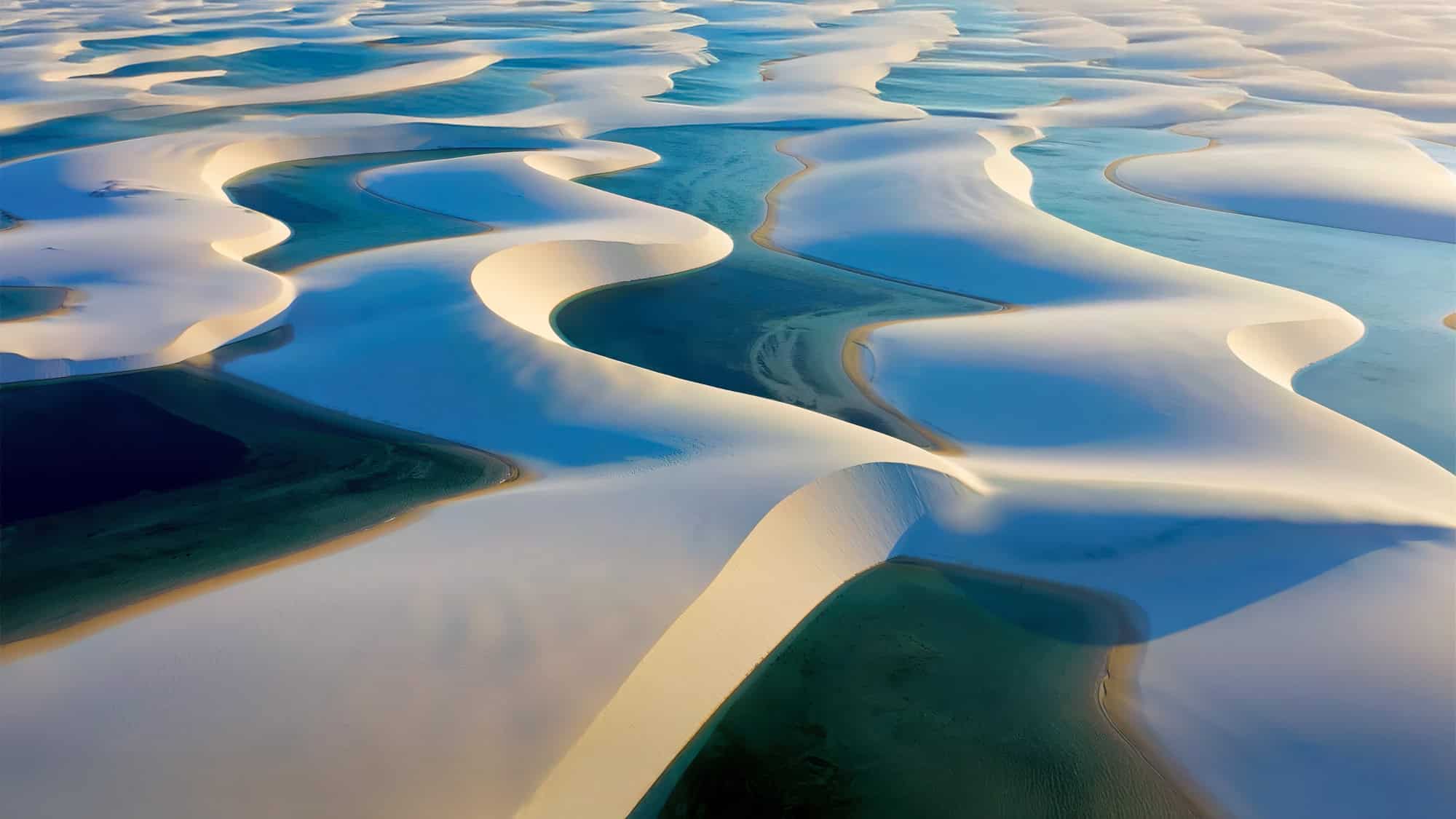
White sand dunes rolling endlessly in the sun sound pretty standard, right? Wrong. Toss in rainwater lagoons that gleam an electric blue after the rainy season, and you’ve got the natural equivalent of a surrealist painting.
But these pools are only temporary guests, vanishing in the dry season, so timing is everything. Want to spice up your swimming game? These lagoons may as well be luxury pools beside the Sahara’s sandcastles. And yes, they’re warm enough to make you wonder why you’ve been enduring overly chlorinated pools your whole life.
Rainbow Mountains, China
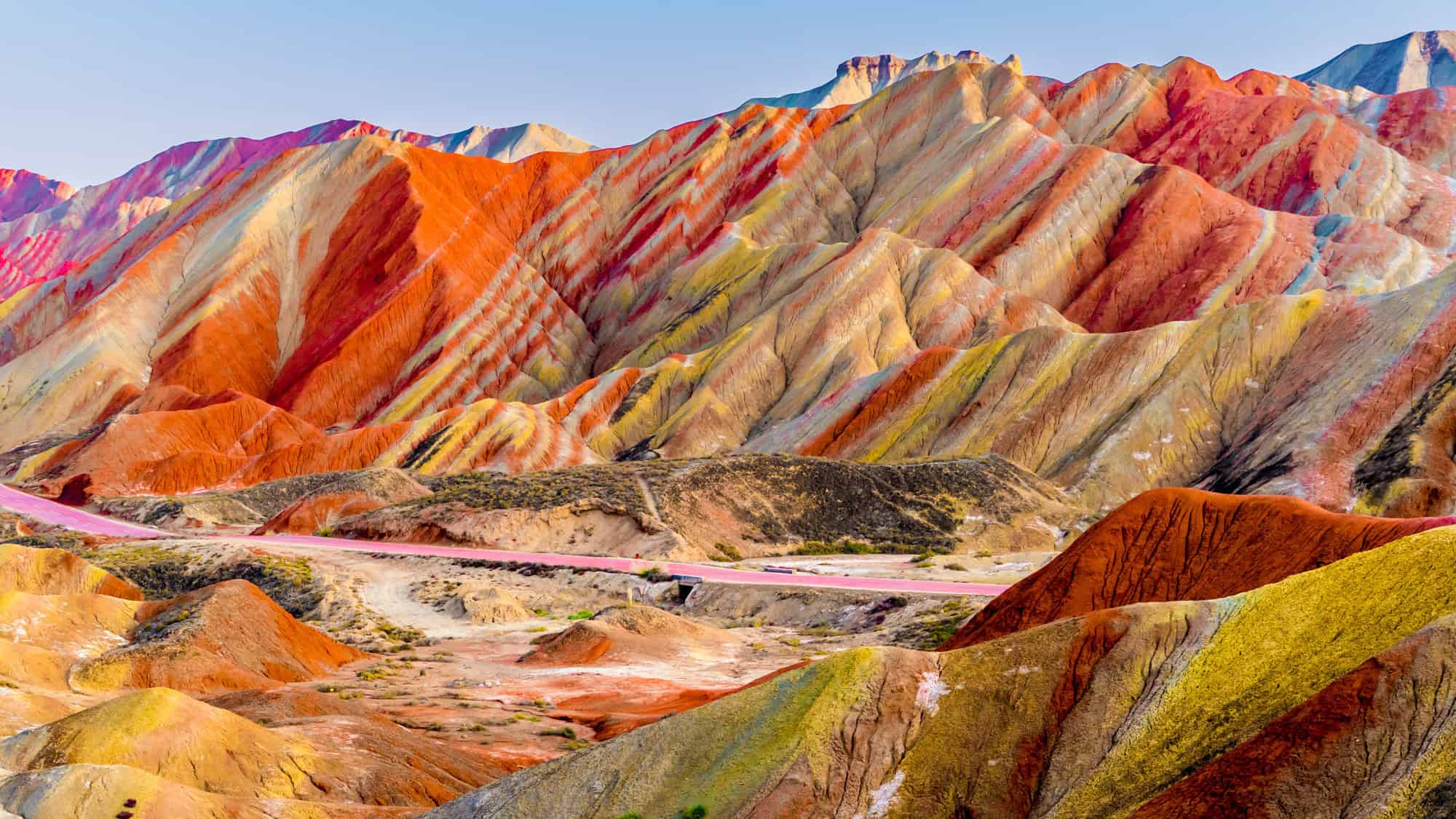
Who needs rainbows in the sky when the ground itself is showing off? The Rainbow Mountains in Zhangye Danxia look like someone forgot sunscreen and got absolutely roasted in stripes. Layers upon layers of red, orange, and yellow streak across these peaks, earning them a place among Earth’s greatest geological masterpieces.
And it’s all thanks to millions of years of layered sandstone and minerals… imagine being that patient. Some might call the pattern kaleidoscopic, but that feels like underselling it a bit, don’t you think?
Lake Hillier, Australia
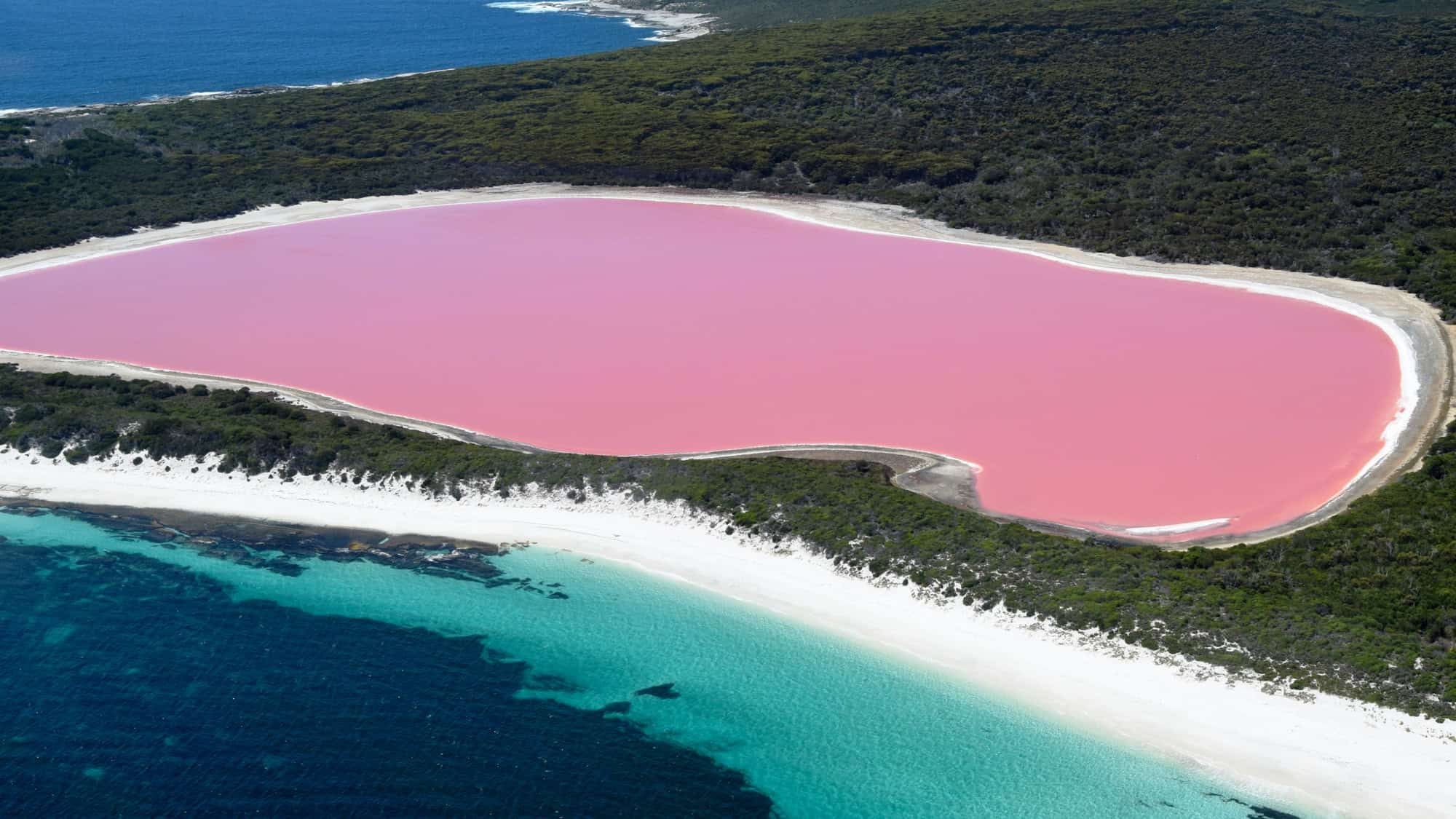
There’s pink, and then there’s PINK. Lake Hillier is out here looking like someone spilled a massive strawberry milkshake and just decided to own it. But this bubblegum-colored lake isn’t a photo filter trick. Its rosy hue comes courtesy of Dunaliella salina algae, which are clearly thriving in this ultra-salty haven.
You can’t exactly cannonball into the lake (it’s a protected area), but just gazing at it might have you reconsidering airfare deals to Australia. Also, this lake is chilling on Middle Island, surrounded by lush green eucalyptus trees and the blue ocean, creating a color palette so epic it could upstage most national flags.
Salar De Uyuni, Bolivia
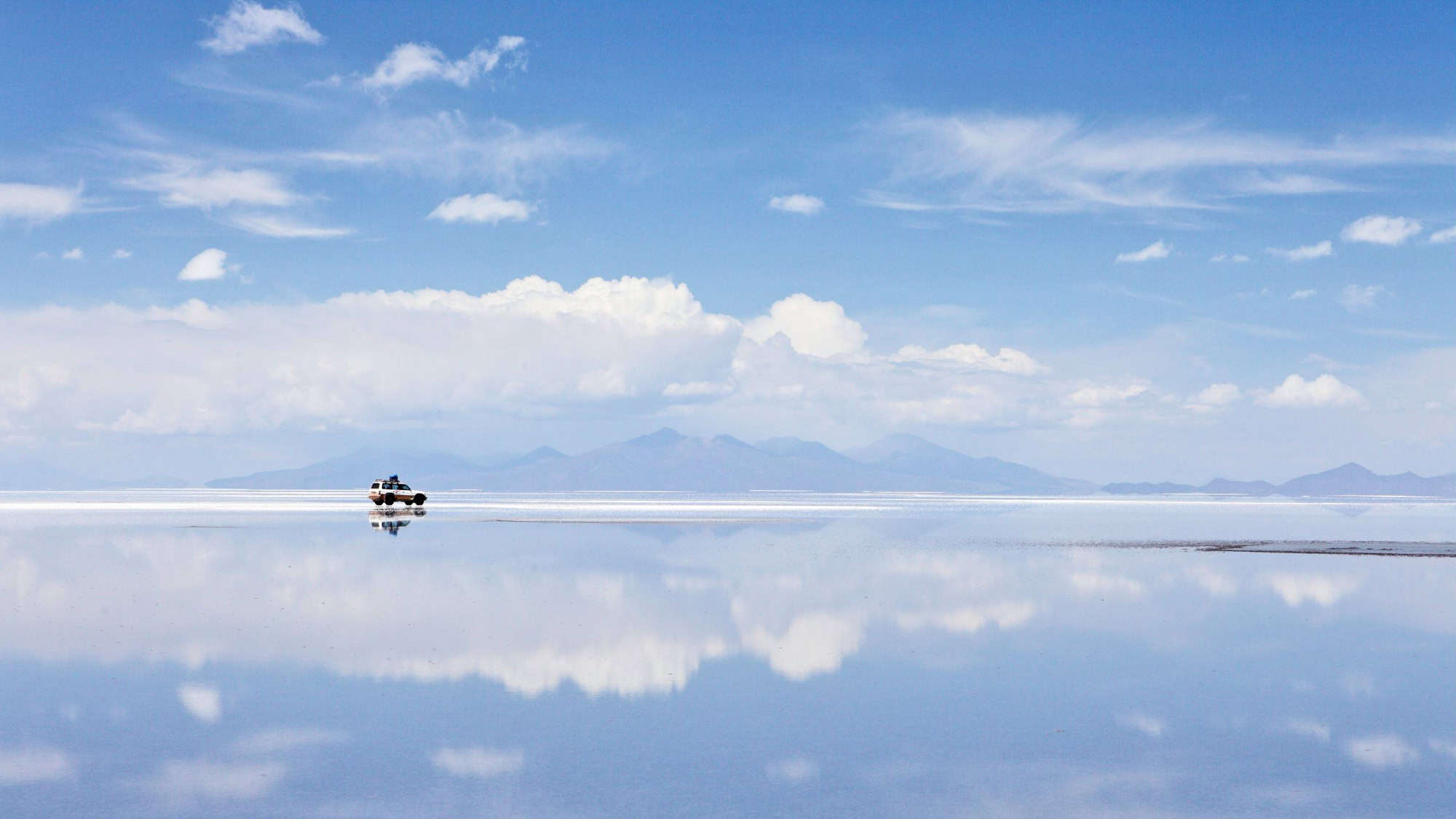
If you’ve ever wondered what stepping into a Salvador Dali painting might feel like, Salar de Uyuni delivers an experience so surreal you’ll question reality. During the rainy season, this salt flat transforms into the world’s largest mirror, reflecting the sky so perfectly it’s like walking on clouds… except the floor is crunchy.
Stretching over 4,000 square miles, it’s also an optical illusion artist’s dream, creating endless opportunities to mess with your sense of scale. And don’t even get started on the salt. It’s an estimated 10 billion tons, which raises the question, who’s seasoning the planet? Just don’t lick it. Save yourself the embarrassment.
Cano Cristales, Colombia
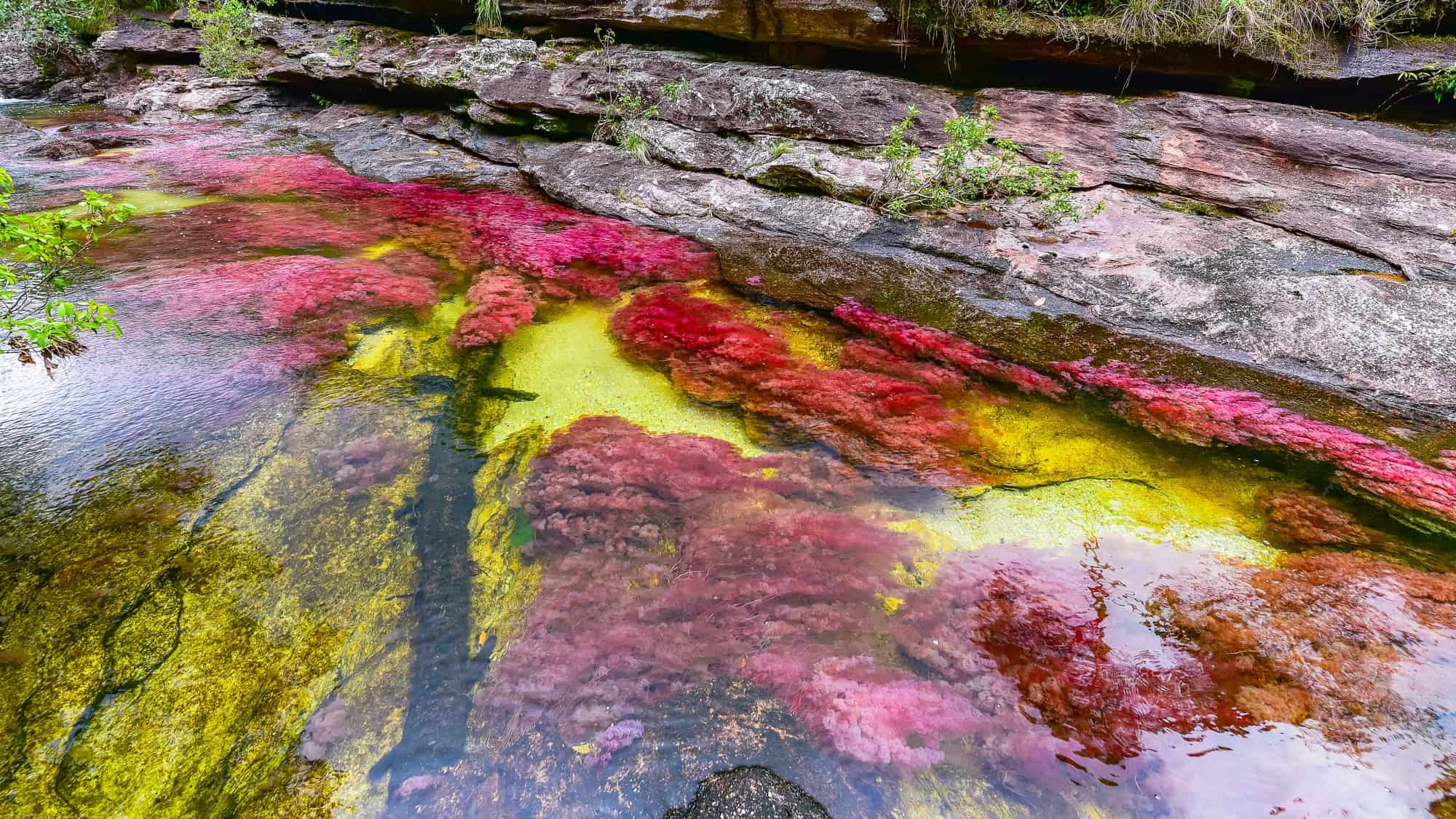
Some rivers flow quietly, but Cano Cristales is here to turn up the drama. Known as the “River of Five Colors,” it’s practically flaunting a tie-dye look every floral shirt dreams of. What’s the secret? A plant called Macarenia clavigera that blushes in every shade from red to yellow to green, depending on the season.
The colors are brightest from May to November, so plan wisely unless you want to catch it wearing its off-season gray. Throw in waterfalls and rock pools, and you’ve got yourself the most exotic river on the planet. It’s refreshing not just for the eyes, but for anyone in need of proof that rivers can be incredibly beautiful too.
Panjin Red Beach, China
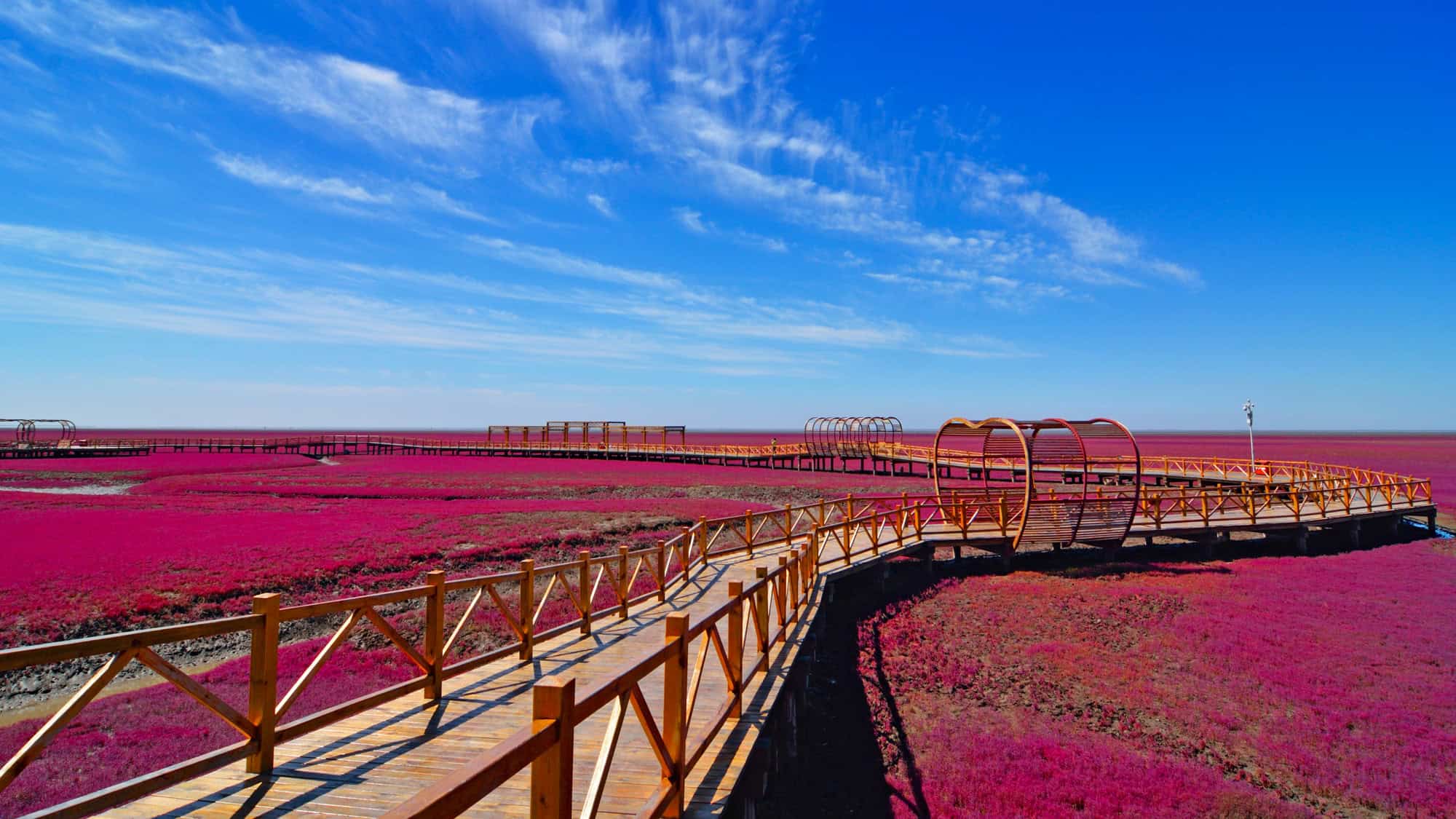
A beach that’s not sandy, but red? Sueda, a seaweed that gets all dramatic with its outfit change every autumn, turns Panjin’s wetlands into something that looks straight out of a sci-fi film. But this beach is less about tanning and more about witnessing a botanical color riot unfold before your eyes.
The contrast between the fiery red landscape and the winding rivers that snake through it is so striking you’ll be left wondering if you’ve stumbled onto some alternate Mars. It’s also a haven for migratory birds... so don’t be surprised if some cranes photobomb your impeccable shots. They know they’re part of the spectacle, and frankly, who could blame them?
Danakil Depression, Ethiopia

Looking for colors in a place that feels dystopian? Step into the Danakil Depression, one of the hottest spots on Earth, and you’ll feel like you’re on a sci-fi movie set. The vivid yellows, greens, and oranges come from sulfur, salt, and other minerals bubbling away in hydrothermal fields that practically sizzle. And it’s so bizarrely beautiful you might expect to spot aliens scouting real estate.
The word extreme doesn’t even cut it here, though. The air smells heavily of sulfur and temperatures casually hit unbearable levels. But those brilliant colors? They’re worth sweating through your shirt for.
Pamukkale, Turkey
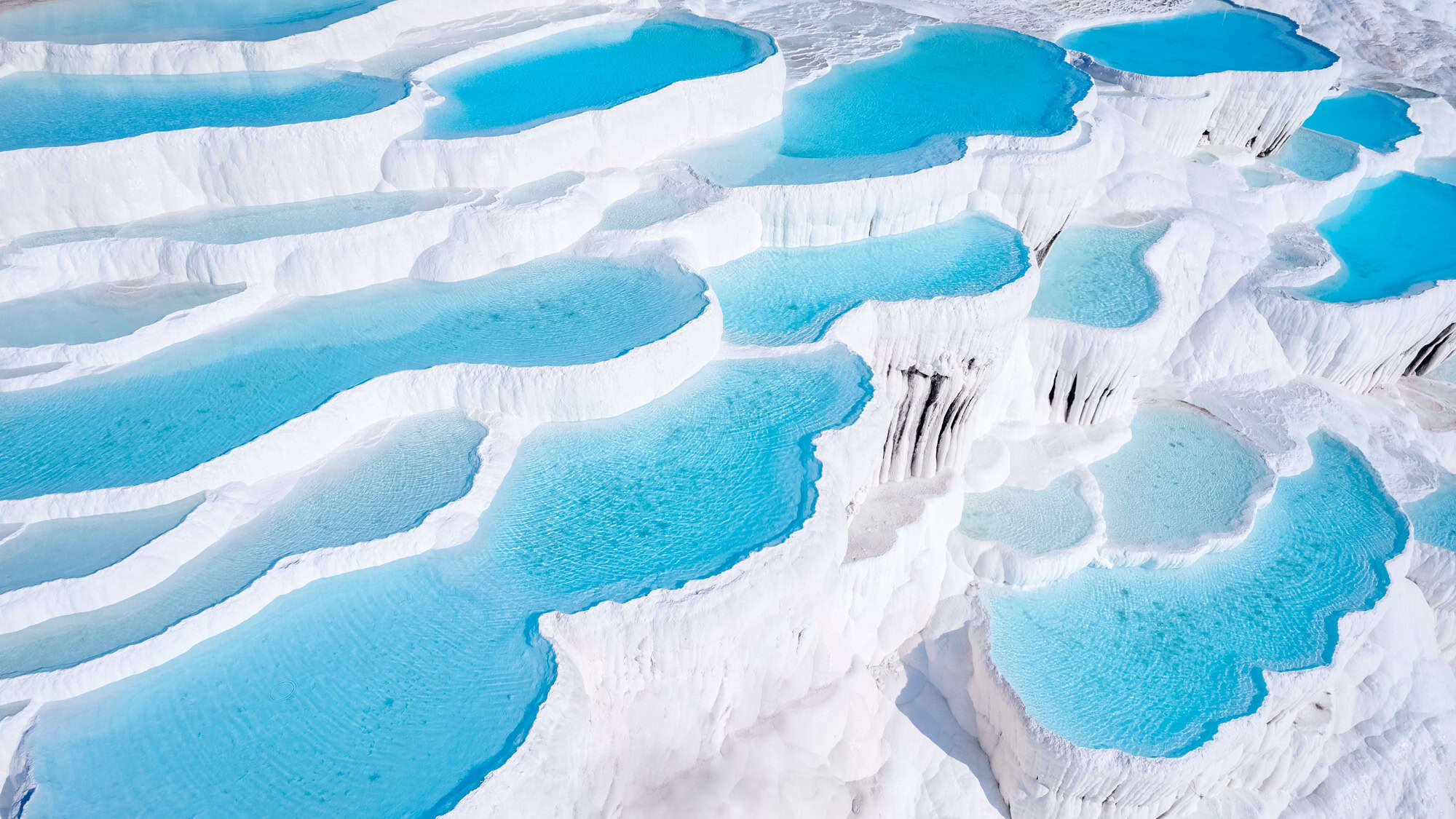
Pamukkale literally translates to “Cotton Castle,” and for once, the name isn’t overselling it. These white terraces made of travertine (created by calcium-rich hot spring water) look like fluffy clouds you could nap on, but don’t try it unless you’re cool with some very hard life lessons. The water flowing down these terraces is warm enough to soothe your soul, but what really steals the show is the stunningly pristine aesthetic.
It’s nature’s own luxury spa… but with fewer folded towels and more “don’t touch that” signs. Travelers have been raving about Pamukkale for centuries, including some Roman emperors who clearly knew where the party was at. Hot springs and history? That combo is tough to argue with.
Nacreous Clouds (Polar Stratospheric Clouds)
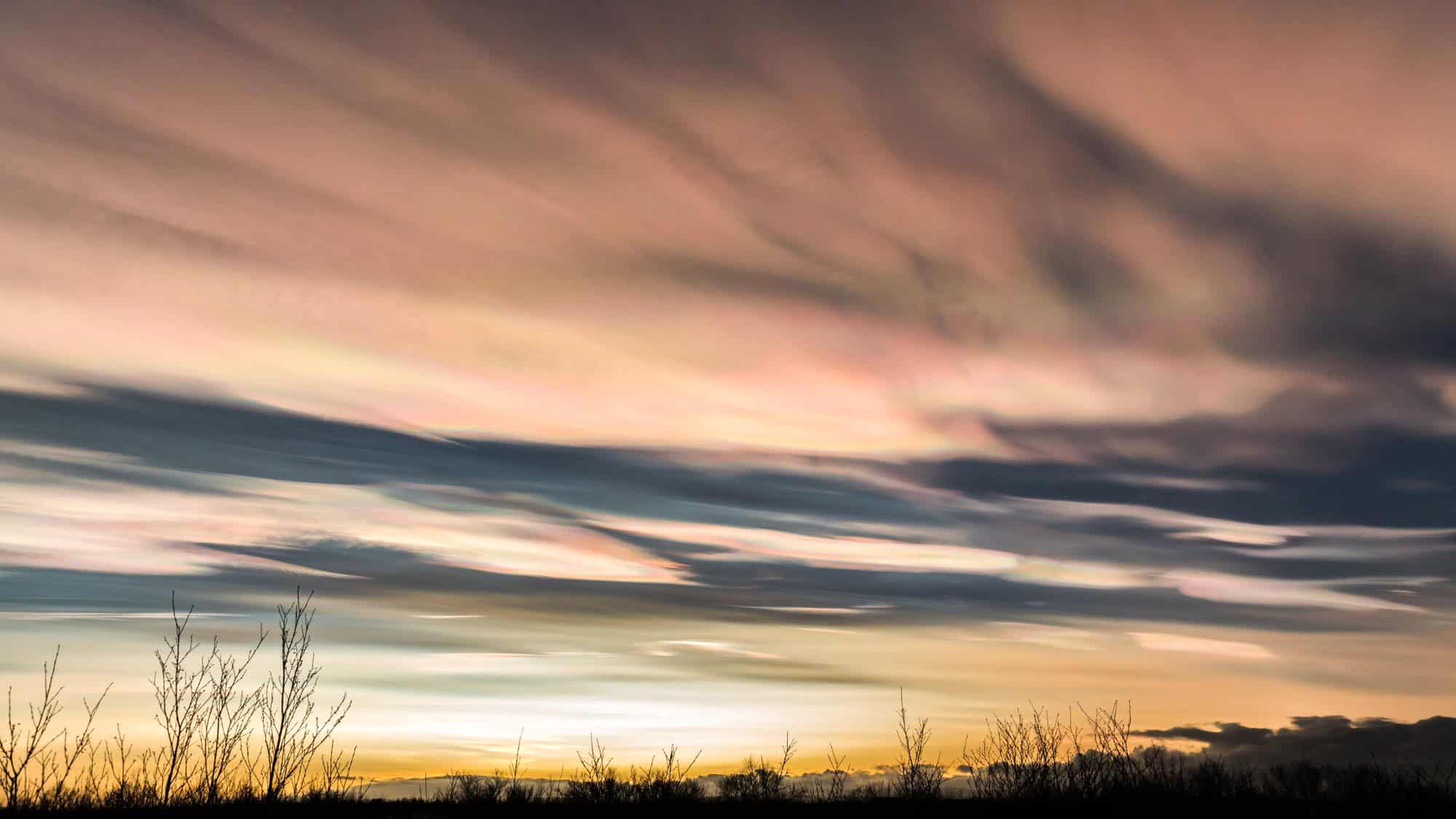
If clouds went to art school, nacreous clouds would be the overachievers in every experimental class. These bad boys hang out in the frigid stratosphere at high latitudes and light up with iridescent colors when twilight sets in. It’s hardly fair, really, that the rest of the sky gets to clock out for the day, but these clouds are like, “Nah, we’ve still got a show to put on.”
And their shimmering pastel hues look so dreamy, you’d assume this was some atmospheric diva moment. But no, nacreous clouds are actually formed when insanely cold air meets the right cocktail of moisture and sunlight. They’re rare, stunning, and quietly remind us that Earth’s upper atmosphere doesn’t need your approval to turn all the way up.
Like Our Content? Make sure to join our newsletter for all the latest on outdoor adventures (and a FREE STARGAZING GUIDE). Click here to sign up!



